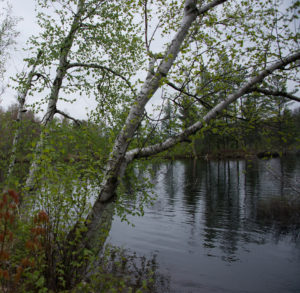By Robert Godfrey
Wisconsin has an incredible variety of lakes, wetlands, rivers and streams, from the shores of Lakes Michigan and Superior to the Mississippi River. It also has a lot of forest lands. Over the past 100 years, Wisconsin’s public and private land managers have restored our forests and managed them with an eye on future generations. In fact, 46 percent of our state is now covered with trees and more than half our woodlands are family owned.

Photo by Rena Johnson, courtesy of NASF
Earlier in our state’s history, the forests were heavily harvested with little regard for the environmental damage to our streams, rivers and lakes. Since the hiring of Wisconsin’s first state forester in 1904, Wisconsin’s state forestry program has been dedicated to restoring, maintaining and improving the health and quality of Wisconsin’s forests for today – and for future generations.
These two natural resources – forests and water – are both important to Wisconsin today. They provide income from forest products. They are also home for Wisconsin’s fish and wildlife. Each of them defines the character of the state. Both are vital for recreation and tourism. How do we ensure these two natural resources can co-exist and benefit each other?
One important way is through the Wisconsin Forestry Best Management Practices (BMPs) for Water Quality.
Wisconsin’s forestry “Best Management Practices” for water quality program (BMPs), is now celebrating its 25th anniversary in 2020. The practices help to make sure water quality is protected – before, during, and after forest management work takes place. These “best practices” are critical for keeping the water quality benefits that healthy forests provide.
The Wisconsin BMPs are voluntary guidelines. They help landowners and managers reduce sediment runoff. The BMPs provide guidance for activities such as timber harvesting around lakes, streams and wetlands, road building and maintenance, and stream and wetland crossings. The goal is to prevent sediment from washing into nearby waterways or contribute to stream bank erosion.
The best news is that the BMPs are working. Our monitoring program demonstrates that their effectiveness for protecting water quality is extremely high (more than 99%) when they are applied correctly.
Private landowners, loggers and natural resource managers can attend BMP education and training workshops. These BMPs have demonstrated their worth over the years as valuable tools that have proven to be both cost-effective and practical.
Learn more about Wisconsin’s Forestry Best Management Practices for Water Quality here.
Visit the National Association for State Foresters website to learn how other states are also using forestry BMPs to help ensure water quality is protected before, during and after forest management work takes place.
#NASF100
